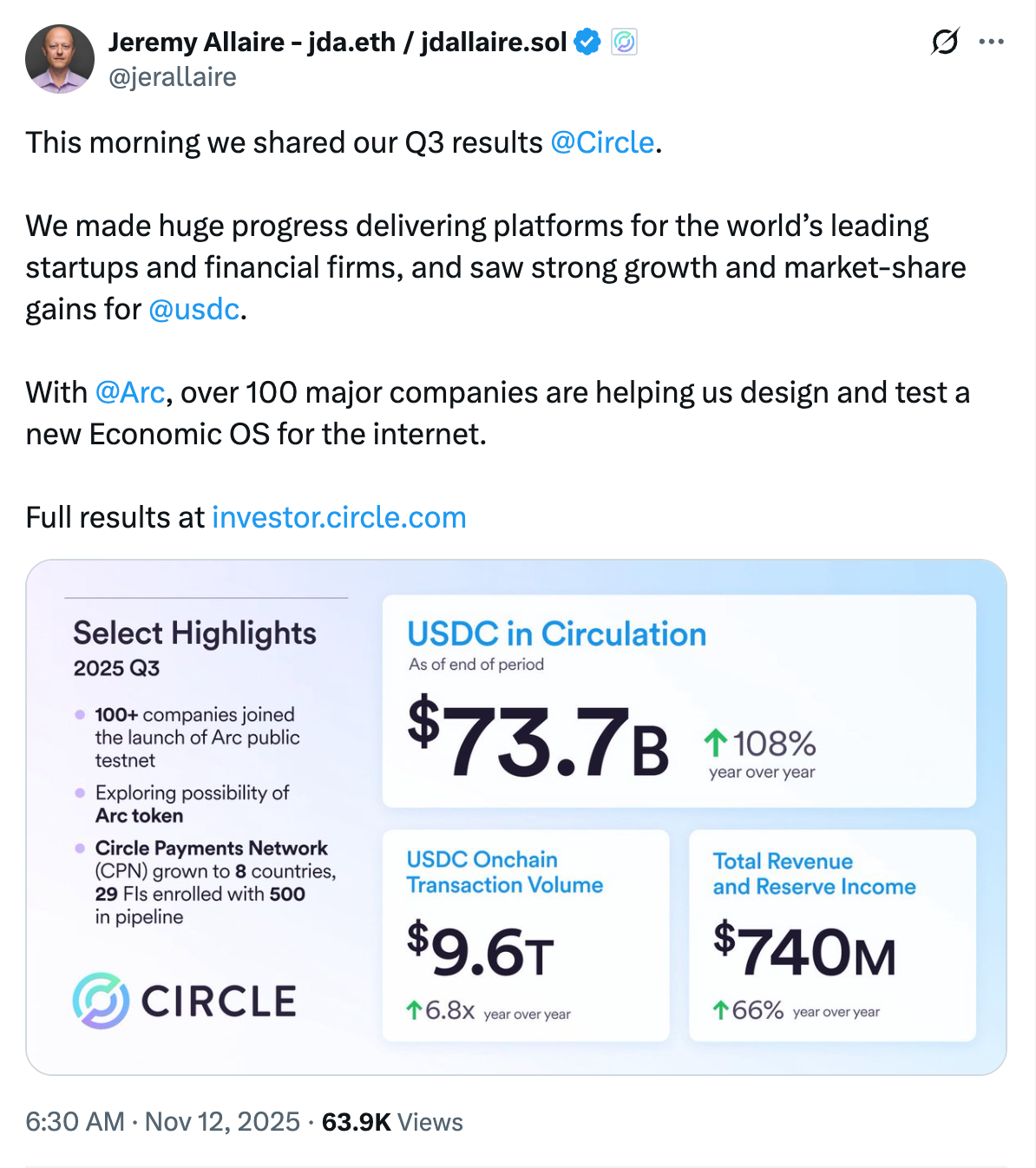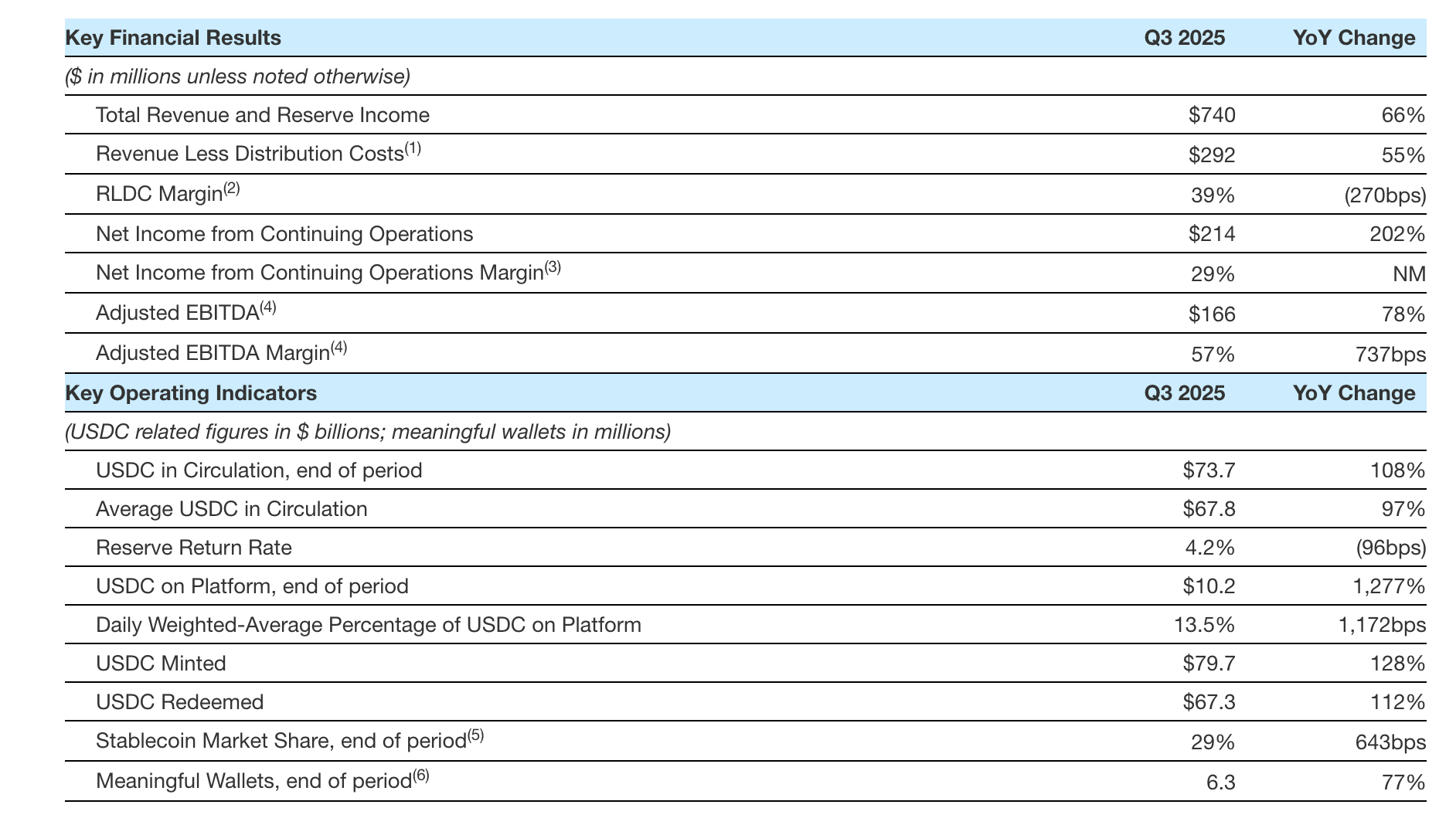
Circle‘s Bold Move: A Native Token for Arc
Stablecoin giant Circle, the issuer of the widely adopted USDC, is making significant strides in the blockchain landscape. The company recently announced plans to launch a native token for its Arc blockchain, an enterprise-focused layer-1 network built atop the Ethereum Virtual Machine (EVM). This strategic move, unveiled alongside impressive Q3 financial results, signals Circle‘s ambitions to further solidify its presence in the burgeoning institutional crypto market.

Arc‘s Genesis and Vision
The Arc testnet, which debuted in October, has already garnered significant attention, boasting partnerships with prominent financial institutions such as Goldman Sachs, BlackRock, and Visa. Initially designed to utilize USDC and other stablecoins for gas fees, the introduction of a native token suggests a pivot towards a more decentralized governance model. Circle envisions a network governed by geographically distributed validators, aiming to foster greater participation, align stakeholder interests, and ensure the long-term viability of the Arc ecosystem.
Q3 Financial Performance: A Positive Indicator
The announcement of the native token coincided with Circle‘s Q3 financial results, which painted a picture of robust growth. The company reported a 66% year-over-year increase in revenue, reaching $740 million. Net income surged by an impressive 202% to $214 million. While distribution and transaction costs, as well as operating costs, also saw increases, the overall financial performance underscores Circle‘s strengthening position in the market.

The Appchain Debate: A Growing Trend
The Arc network’s design, focusing on specific applications, exemplifies the growing trend of application-specific blockchains, or appchains. These networks aim to address the scalability and efficiency limitations often associated with general-purpose blockchains. However, the appchain model faces criticism, primarily regarding the fragmentation of liquidity, potential centralization risks, and the complexities of infrastructure and compliance. Critics, like Andre Cronje, highlight the extensive costs involved in supporting appchains, including explorers, custody solutions, and regulatory compliance.

Interoperability: A Counterargument
Conversely, proponents of interoperability, such as Polygon Labs CEO Marc Boiron, argue that existing and emerging solutions will mitigate the challenges associated with appchains. This perspective emphasizes the importance of seamless communication and asset transfer between different blockchain networks. The ability to bridge assets and data across chains is crucial for unlocking the full potential of appchains and creating a more interconnected crypto ecosystem.
Implications and Future Outlook
Circle‘s move to introduce a native token for Arc underscores its commitment to the evolving landscape of institutional crypto adoption. The token could incentivize participation, strengthen the network’s decentralized governance structure, and potentially fuel wider adoption by businesses. As the company continues to innovate and expand its presence, the success of the Arc network, coupled with its native token, will be critical to Circle’s future. The appchain narrative will continue to evolve, with its trajectory depending on overcoming hurdles like interoperability and regulatory clarity.


